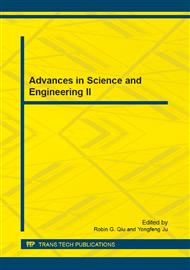p.628
p.637
p.643
p.649
p.655
p.660
p.667
p.673
p.678
Optimal Guidance Law Design for Interception of Ballistic Missiles during the Boost Phase
Abstract:
An optimal guidance law for interception of ballistic missile during the boost phase is presented in this paper. The kinematics characteristics of tactical missile during its boost phase are analyzed firstly. Then based on the kinematics given and assumption, the relative kinematics equations between target and missile are established. Optimal guidance law via LQ optimization is derived under the specified cost function. The time-to-go estimation method is also given in the paper. In the end of this paper, simulation is executed and the results validate that the deduced guidance law satisfy the direct hit index.
Info:
Periodical:
Pages:
655-659
Citation:
Online since:
October 2011
Authors:
Price:
Сopyright:
© 2012 Trans Tech Publications Ltd. All Rights Reserved
Share:
Citation:


